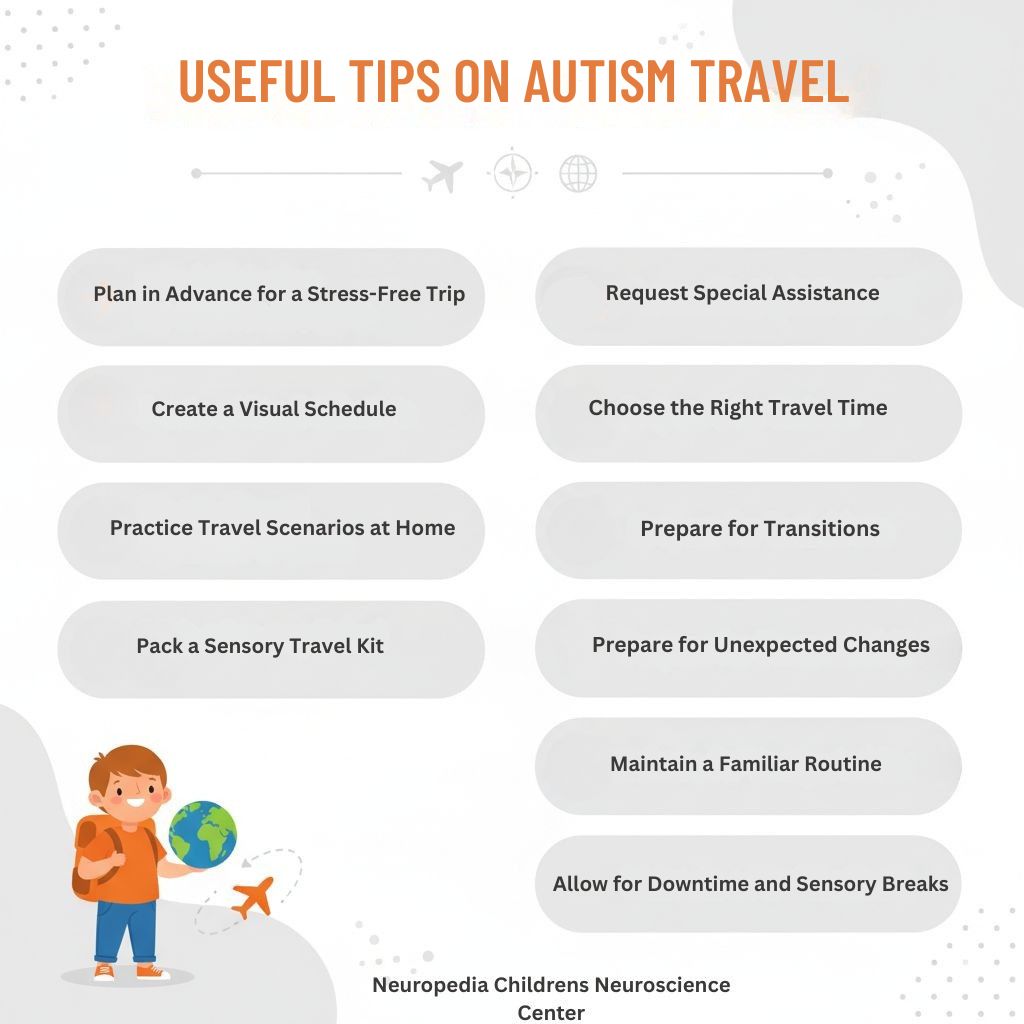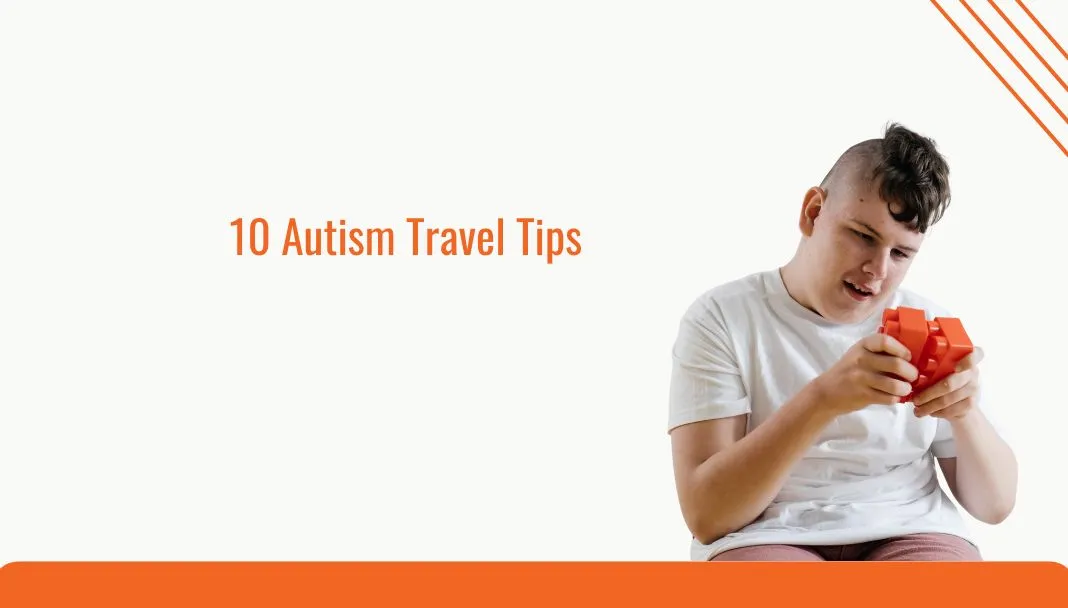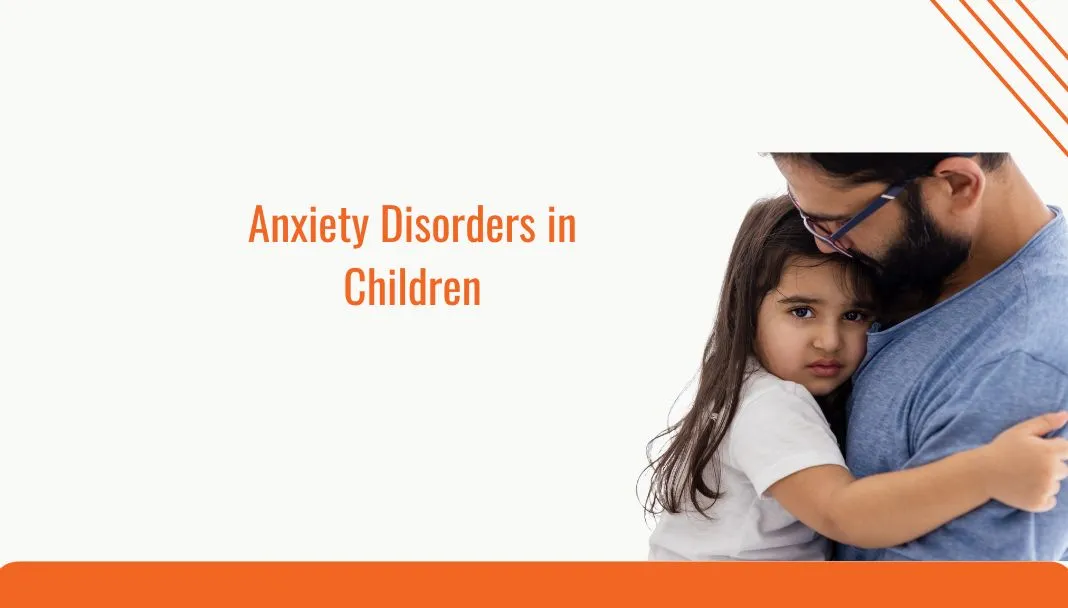Stress-Free Travel with Autism: Bringing You An Ultimate Guide!
Traveling with a child on the autism spectrum can feel like navigating an unpredictable journey, full of excitement but also potential challenges!
Autism and vacation can turn out to be a blend of new environments, unfamiliar routines, and sensory overload, making the journey overwhelming. However, with the right preparation, it can be a smooth and enjoyable experience for both the child and their family. From planning ahead to creating a comforting travel kit, small adjustments can make a big difference in ensuring a stress-free trip.
At Neuropedia, expert paediatric neurologists and therapists provide personalised guidance and strategies to help families navigate autism travel with confidence, ensuring that children with autism feel secure and supported every step of the way.
What Is It Like Traveling With an Autistic Child?
Traveling with an autistic child requires extra planning and accommodations. Many children with autism experience sensory sensitivities, difficulty with changes in routine, and challenges in new social environments. Parents often face concerns about managing meltdowns, ensuring comfort, and maintaining a structured plan while traveling.
However, with proper strategies, traveling can be a rewarding experience for both the child and the family. By preparing ahead, using sensory tools, and maintaining predictability, families can create positive travel memories.
Neuropedia specialists offer customized plans and strategies to help families ensure a smooth journey.
How to Travel With an Autistic Child?
Successfully traveling with an autistic child involves a combination of preparation, flexibility, and support.
Here are some essential steps:
- Plan in Advance: Research autism-friendly accommodations, transportation, and attractions.
- Practice Transitions: Prepare a travel itinerary consisting of images or symbols to help your child understand the sequence of events. Use visual schedules and visual timer apps to help your child understand what comes next, from boarding a flight to arriving at the hotel. These visual tools offer reassurance and make transitions smoother.
- Practice Beforehand: Introduce your child to new experiences in smaller doses before the actual trip.
- Bring Sensory Comfort Items: Pack noise-canceling headphones, fidget toys, or weighted blankets to help manage sensory overload.
- Maintain Routine as Much as Possible: Stick to familiar meal times and bedtime schedules.
- Communicate Special Needs to Travel Staff: Inform airlines, hotels, or attractions about your child’s needs for smoother assistance.
- Take Frequent Breaks: Allow time for relaxation and sensory decompression to prevent meltdowns.
Neuropedia’s autism specialists provide tailored recommendations based on each child’s unique needs to help parents navigate travel challenges effectively.
Can You Travel With an Autistic Child?
Yes! Traveling with an autistic child is absolutely possible with the right approach. While there may be additional challenges, careful planning, patience, and support can make the experience enjoyable.
Many airlines, hotels, and attractions now offer accommodations for children with autism, making travel more accessible than ever. But, how do you know an accommodation is autism-friendly?
Look for signs that a property is autism-friendly, such as staff trained in neurodiversity awareness, sensory-friendly rooms, or the availability of customized meal plans. Check whether they provide calm zones, and if they can accommodate special requests like minimizing noise or adjusting lighting. Always call ahead to confirm their support services.
Before booking, contact the accommodation directly to ask about their understanding of autism needs. Some hotels even offer early check-ins or room previews to help ease transitions. These small gestures can make a big difference for a smooth stay.
Neuropedia encourages parents to carry a medical card or autism ID to help communicate needs effectively.
Some Super Useful Tips on Autism Travel

Neuropedia provides expert travel strategies, sensory integration therapy, and behavioral techniques to help families prepare for successful trips. With the right support, families can confidently embark on travel adventures, creating beautiful and lasting memories.
1. Plan in Advance for a Stress-Free Trip
Preparation is key when traveling with an autistic child. Research your destination, transportation, and accommodations to ensure they are autism-friendly.
Look for:
- Hotels with quiet rooms or sensory-friendly options
- Airports that offer fast-track security for children with autism
- Attractions that accommodate special needs travelers
At Neuropedia, specialists provide personalized strategies to help families prepare for travel, including structured travel plans and social stories.
2. Create a Visual Schedule
Children with autism benefit from clear structure. Use visual schedules to outline each step of the journey, from leaving home to arriving at your destination. This helps them visualize the day and anticipate what’s next.
Include:
- Flight or car ride times
- Hotel check-ins
- Activities planned each day
Neuropedia experts recommend using visual cues and social stories to ease anxiety and create a sense of predictability.
3. Practice Travel Scenarios at Home
If your child is flying for the first time, prepare them by role-playing airport procedures at home.
You can:
- Watch videos of airports or train stations
- Practice security checks with a pretend scanner
- Take short car or train rides to build comfort
Neuropedia offers behavioral therapy techniques that help children adapt to new experiences through gradual exposure and reinforcement.
4. Pack a Sensory Travel Kit
Travel environments can be overwhelming, so having a sensory travel kit can help keep your child calm.
Include:
- Noise-canceling headphones
- Sunglasses for bright lights
- Fidget toys or stress balls
- Weighted lap pads for comfort
Neuropedia’s therapists can recommend tailored sensory tools based on your child’s needs.
5. Request Special Assistance
Airports and airlines often have services for passengers with hidden disabilities.
One useful tool is the Sunflower Lanyard (Hidden Disabilities Sunflower), which discreetly signals that the wearer has a non-visible condition and may need additional time or support. You can learn more or request one at https://hiddendisabilitiesstore.com/.
6. Choose the Right Travel Time
When booking flights or road trips, opt for non-peak travel hours to avoid crowds and long wait times. Early-morning or late-night flights often have fewer passengers, reducing sensory overload.
Neuropedia Tip: Consider contacting airlines in advance to request special assistance, such as early boarding or seating in a quieter area.
7. Prepare for Transitions
Changes in routine can be challenging. Use visual timer apps to show when activities will begin or end, helping your child adjust smoothly between transitions.
8. Prepare for Unexpected Changes
Despite careful planning, unexpected situations may arise.
Prepare your child by:
- Using a social story to explain that changes may happen
- Keeping a familiar comfort object like a favorite toy or blanket
- Having backup plans for activities in case of cancellations
Neuropedia therapists can help families develop coping mechanisms to manage anxiety in unpredictable situations.
9. Maintain a Familiar Routine
Sticking to a child’s daily routine can help reduce stress during travel.
Try to:
- Keep meal and bedtime schedules consistent
- Bring familiar snacks and favorite foods
- Use the same relaxation techniques used at home
Neuropedia Tip: Use visual timetables to structure daily vacation activities and provide reassurance.
10. Allow for Downtime and Sensory Breaks
Overstimulation can lead to meltdowns. Plan breaks between activities to allow your child to decompress.
Look for:
- Quiet corners in airports and train stations
- Parks or open spaces at tourist attractions
- Hotel rooms with calming environments
Neuropedia specialists emphasize the importance of incorporating sensory breaks into travel schedules.
Additional Tip:
Stay Positive and Flexible
While preparation is key, maintaining a positive and flexible attitude is just as important. Travel can be unpredictable, but being patient and adaptive can help ensure an enjoyable experience for everyone.
Strike a Seamless Balance Between Autism and Vacation With Your Children!
Let the Neuropedia team assist you well!
Traveling with an autistic child comes with unique challenges, but with careful planning and the right strategies, it can be a rewarding and joyful experience. From preparing a visual travel schedule to packing a sensory kit and maintaining a familiar routine, these autism travel tips can make vacations smoother.
At Neuropedia, specialists offer personalized therapies and travel guidance, helping families create stress-free travel experiences tailored to their child’s needs. By implementing these tips and seeking expert support, parents can make travel enjoyable, memorable, and accessible for their autistic child.











 04 343 1113
04 343 1113 info@neuropedia.ae
info@neuropedia.ae







.png)







